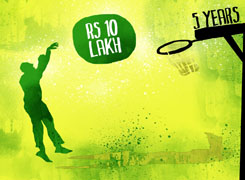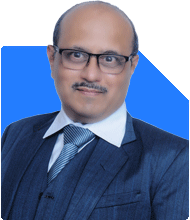Ramalingam Kalirajan |10923 Answers |Ask -Follow
Mutual Funds, Financial Planning Expert - Answered on May 24, 2024
He has an MBA in finance from the University of Madras and is a certified financial planner.
He is the director and chief financial planner at Holistic Investment, a Chennai-based firm that offers financial planning and wealth management advice.... more

Sir - Is having MFs in Demat form advantageous rather than in physical possession? I shall be grateful for your advice.
Let's delve into the advantages and disadvantages of holding Mutual Funds (MFs) in Demat form versus physical possession to help you make an informed decision.
Understanding Demat Accounts
Demat Account Advantages
Convenience: Demat accounts offer a single platform to hold various financial securities, including stocks, bonds, and mutual funds.
Electronic Transactions: Allows for easy buying, selling, and transferring of mutual fund units, eliminating paperwork and manual processes.
Demat Account Disadvantages
Annual Charges: Demat accounts typically incur annual maintenance charges, adding to the overall cost of holding investments.
Transaction Charges: Each transaction (buying, selling, or transferring units) attracts transaction charges, increasing the cost further.
Opting for Physical Mutual Funds
Advantages of Physical Mutual Funds
No Annual Charges: Unlike Demat accounts, physical mutual funds do not entail annual maintenance charges, reducing overall expenses.
No Transaction Charges: Physical mutual funds eliminate transaction charges associated with buying, selling, or transferring units.
Conclusion: Which Option to Choose?
Given the disadvantages associated with Demat accounts for holding mutual funds, opting for physical possession seems more advantageous in the long run.
Recommendation
Considerations for Holding Physical Mutual Funds
Convenience: Physical mutual funds offer ease of ownership without the hassle of account maintenance charges or transaction fees.
Cost-Efficiency: By avoiding annual charges and transaction fees, you can minimize expenses and maximize returns on your investments.
Simplicity: Holding physical mutual funds simplifies your investment portfolio management and reduces the administrative burden.
Making an Informed Decision
While Demat accounts offer convenience and electronic access to financial securities, the associated costs may outweigh the benefits, especially for mutual fund investors.
Seek Professional Advice
Consult with a Certified Financial Planner (CFP) to assess your individual circumstances, risk tolerance, and investment objectives. A CFP can provide personalized guidance and recommend the most suitable investment approach aligned with your financial goals.
Best Regards,
K. Ramalingam, MBA, CFP,
Chief Financial Planner,
www.holisticinvestment.in
Best Regards,
K. Ramalingam, MBA, CFP,
Chief Financial Planner,
www.holisticinvestment.in
You may like to see similar questions and answers below
Ramalingam Kalirajan |10923 Answers |Ask -Follow
Mutual Funds, Financial Planning Expert - Answered on Jun 23, 2025
Naveenn Kummar |237 Answers |Ask -Follow
Financial Planner, MF, Insurance Expert - Answered on Sep 11, 2025
Reetika Sharma |435 Answers |Ask -Follow
Financial Planner, MF and Insurance Expert - Answered on Sep 24, 2025
Nitin Narkhede |113 Answers |Ask -Follow
MF, PF Expert - Answered on Sep 03, 2025
Ramalingam Kalirajan |10923 Answers |Ask -Follow
Mutual Funds, Financial Planning Expert - Answered on Dec 22, 2025
Ramalingam Kalirajan |10923 Answers |Ask -Follow
Mutual Funds, Financial Planning Expert - Answered on Dec 22, 2025
Ramalingam Kalirajan |10923 Answers |Ask -Follow
Mutual Funds, Financial Planning Expert - Answered on Dec 22, 2025
Ramalingam Kalirajan |10923 Answers |Ask -Follow
Mutual Funds, Financial Planning Expert - Answered on Dec 22, 2025
Ramalingam Kalirajan |10923 Answers |Ask -Follow
Mutual Funds, Financial Planning Expert - Answered on Dec 22, 2025
Ramalingam Kalirajan |10923 Answers |Ask -Follow
Mutual Funds, Financial Planning Expert - Answered on Dec 22, 2025
Ramalingam Kalirajan |10923 Answers |Ask -Follow
Mutual Funds, Financial Planning Expert - Answered on Dec 22, 2025
Ramalingam Kalirajan |10923 Answers |Ask -Follow
Mutual Funds, Financial Planning Expert - Answered on Dec 22, 2025
Ramalingam Kalirajan |10923 Answers |Ask -Follow
Mutual Funds, Financial Planning Expert - Answered on Dec 22, 2025
Ramalingam Kalirajan |10923 Answers |Ask -Follow
Mutual Funds, Financial Planning Expert - Answered on Dec 22, 2025

























